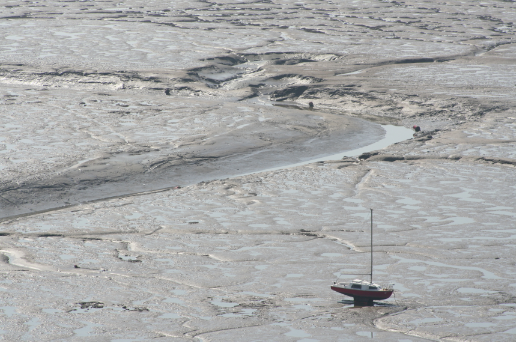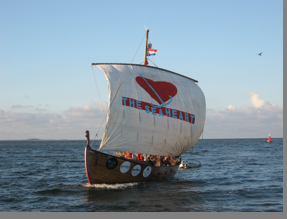Hundreds of yachtsmen in the Thames are set to sail past a ticking time-bomb from the Second World War this season, says Dick Durham
Dick Durham: More than 200 Dutch yachts will sail to Chatham on 8 June to celebrate the 350th anniversary of the worst day in the history of the Royal Navy when their ancestors set the River Medway alight. Dutch fire ships attacked the English fleet causing two of them to explode before towing the flagship Royal Charles away as a prize, thereby ending the Anglo-Dutch Wars fought over colonies and trade.
As the hundreds of Dutch yachtsmen and women converge on the Thames Estuary to celebrate their forefathers’ fireships, they will pass the drunken, barnacle-encrusted masts of another ship which is still monitored to this day by the MCA, at a cost of £40,000 a year, due to its potential to explode. They are the masts and derricks of the SS Richard Montgomery, an American ‘Liberty’ ship, which was awaiting orders to join a convoy down Channel to supply D-Day forces in June 1944. She grounded, sank and broke her back on the shoals of Nore Sand.
The 129m-long freighter, now in two halves,
is still loaded with 1,500 tons of high explosives, including ‘blockbuster bombs’, armour-piercing shells, and white phosphorus bombs.
In my youth we would sail past in our dinghies, looking in awe at what was then not just masts and derricks, but also a bridge and a funnel, down which two local dinghy-racing champs are alleged to have dropped an anchor.
Today the wreck is off-limits with a 500m exclusion zone around it, marked with yellow spherical buoys, although a paddle-boarder violated it last summer to take a ‘selfie’.
As the Dutch sailors use GPS to negotiate the shoals of the Thames Estuary they may consider that their forbears worried over the same shallows. Many of Admiral de Ruyter’s officers did not want the raid to go ahead for fear their ships would also end up wrecked.
Back in the tension-filled summer of 1944, it was the harbourmaster of the Thames naval control, HMS Leigh, based on the end of Southend Pier, who ordered the ship’s master Captain Wilkie to anchor off the north edge of the Sheerness Middle Sands.
At low water there was only 30 feet of depth available and the ship drew a foot more than that, a fact pointed out by the assistant harbourmaster who refused to carry out the order unless it was put in writing. He was overruled. On the next ebb, lookouts on other ships could see that the swinging hull of the SS Richard Montgomery was about to ground and sounded sirens in warning. Alas, it was too late. The ship hit the sand and as the tide left her she was suspended across a submarine swatchway, fractured, and sank.
Ships that pass in the night
Cruising the Thames
New Thames Estuary buoyage
Buoyage for the East Swin in the Thames Estuary is being moved to keep yachts away from a live firing…
Cross the Thames Estuary
Alerting all pilots
The Vikings are coming
Viking ship to visit Thames
Stevedores worked to transship the deadly freight, but by day three of her stranding she spilt open and her forward holds flooded. The tricky salvage operation continued for a month, extricating more than 4,000 tons of ordnance from the stricken ship until the operation was abandoned leaving hundreds of tons of explosives still to be retrieved.
Over the next 72 years, 24 near misses of passing ships have been recorded, and one freighter actually collided with the wreck, knocking over a deck gun and a giant dorade.
The New Scientist magazine reported that should the ship explode it would cause one of the ‘biggest non-nuclear blasts ever’. Others have warned that a 16ft ‘tsunami’ would race across the Thames and Sheerness, just over a mile away, would suffer serious damage.
We can only hope that the MCA’s analysis from its latest survey carried out earlier this year, that the risk of an explosion is ‘low’ is more accurate than that made by the harbourmaster in August 1944.








